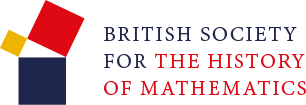The Pandemic and Mathematical Literacy
The Pandemic and Mathematical Literacy
Yom shlishi, 28 Adar 5782.
One of the few benefits of the Pandemic has been an increase in mathematical literacy, especially in the traditional mass media, such as newspapers.
I was reminded of this, when I saw the centrespread “Folio” article in a recent issue of Toronto, Ontario’s, Globe and Mail. It was entitled, “We have the supply and appointments – so why are so many kids unvaccinated?”
The story is illustrated by half a dozen graphic representations of data, situated in the lower right-hand corner.
There is one bar graph, “COVID-19 vaccination first dose uptake for children five-to-11-years old, by province”. It consists of 13 purple-coloured horizontal bars (one for each province or territory of Canada). They are place in descending order of percent vaccination, from Newfoundland and Labrador (N.L.) at 80.3% at the top, and literally descending to Alberta (Alta.) at only 46.9% at the bottom. Each bar is of proportionately full size and not truncated in any way.
To its right are five colour-coded maps, “Percentage of children five-to-11-years old who have received at least one dose of a COVID vaccine”. There are two colour scales with the same colours from deep purple at the low end to deep blue at the high end, one each for the provinces of Alberta and Ontario. The numerical scales are different, accommodating the greater range of percent vaccination in Alberta.
For both Ontario and Alberta there is a map of the whole province, which is divided (I presume) into Public Health Districts. Each district is appropriately coloured with the rates of the outliers indicated. For Alberta, they are Jasper (79.5%) and Banff (68.4%) located along the Rocky Mountain provincial border, while Tabor (16.5%) is near the southeast corner of the province.
There are also maps of the two largest cities, Calgary and Edmonton, divided into colour-coded neighbourhoods. Again, with outliers indicated: Calgary West (70.1%), Calgary Centre (41.8%), Calgary East (33.7%); Edmonton-Rutherford (75.8%), Edmonton-Abbotsfield (26.8%).
For the Ontario map, Ottawa (69.6%) on the east side, Thunder Bay (58.7%) in the far northwest, and Windsor-Essex (44%) are indicated. For the “Golden Horseshoe Area” around Toronto, only the Public Health Districts are shown. From Toronto (56.8%) we move west along the north shore of Lake Ontario to Peel (56.8%) and then Halton (65.8%). We skip over Hamilton to the north shore of Lake Erie for Haldimand-Norfolk at only (38.2%).
Readers are assumed to be able to understand all these graphs without further explanation.
I’ve seen, heard, or watched other uses of reasonably sophisticated mathematics to analyse the Pandemic in newspapers, on radio or on television. In addition to graphs of many kinds, there’s been discussions of the R-factor in exponential growth and the comparison of proportional rates of acute illness among the vaccinated and the unvaccinated.
I wonder, dear Reader, are there any similar examples of mathematical sophistication out there that you might want to write about?
Would you like to contribute to the BSHM blog? Get in touch by emailing webadmin at bshm dot ac dot uk.
Link
Carly Weeks “We have the supply and appointments – so why are so many kids unvaccinated?” Globe and Mail, Thursday, February 24, 2022, pp. A10 -A11.
